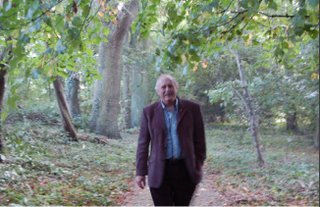It's estimated that half the population of Great Britain claims to have descended from William the Conqueror who defeated King Harold at the Battle of Hastings in 1066. Not all claims meet the rigorous standards of professional genealogists but it's quite reasonable that there are millions of direct descendants of William.
Back in 1400 it was less likely that you were a descendant of William because there were fewer generations and fewer descendants. This was a problem for aspiring nobility and minor landholders so they tended to settle for the next best thing—they claimed descent from one of the companions of William who accompanied him from Normandy and fought at the Battle of Hastings. Gradually the list of companions grew and grew because if you couldn't prove you were related to an existing companion, you just made one up.
Many genealogists and historians have analyzed the various lists of companions. Some lists have over three hundred names but there are only about 20 companions who are definitely known to have been present at the Battle of Hastings in 1066 [William the Conqueror's Companions, The Companions of the Conqueror]. The Order of the Conqueror’s Companions is part of a genealogical society that traces descendants of the companions of William the Conqueror. They list 39 known companions.
Let's assume that there are 20 well-documented companions. Only one of these (William Mallet) has possibly passed on his Y chromosome to the present time and even that male line of descent is disputed. This is fully consistent with our understanding of genetics when you consider that most male lines are likely to die out in a few generations. Those that survive ten generations or so are unlikely to become extinct since there will likely be several male lines at that time.
Only 10 of the companions have descendants who are alive today. This could be due to the fact that genealogists don't have perfect records for all the companions and their families but it's also quite in line with expectations.1 You don't expect that all 20 families will avoid extinction. What this means is that for a random "population" of 40 individuals (20 companions plus their wives), only 20 of them contributed alleles to the present population after 50 generations.2
The take-home lesson from these genealogical studies is that the actual population size at a given point in time is not the same as the actual number of individuals who contribute to the gene pool over the long term.
This has long been known to population geneticists. They define a new term, Ne, called the "effective population size." In order to understand the definition of effective population size, you have to keep in mind that most of the variation in a given population is due to the presence of nearly neutral alleles whose frequency is fluctuating under the influence of random genetic drift. The parameter of interest, Ne, represents the theoretical number of individual in a population of size N who actually contribute to the variation in a population.
The definition is from Sewell Wright [Effective Population Size] ...
Effective population size is "the number of breeding individuals in an idealized population that would show the same amount of dispersion of allele frequencies under random genetic drift or the same amount of inbreeding as the population under consideration."The effective population size is always less than the actual population (Ne < N). Sometimes it's a lot less. In most vertebrates, for example, the long-term effective population size is calculated to be about 10,000.
Why is this important? It's important because evolution is important for understanding biology and in order to understand evolution you need to understand population genetics. One of the important lessons from population genetics is that the relative important importance of natural selection and random genetic drift is dependent on effective population size. This is a major theme in Michael Lynch's book The Origins of Genome Architecture.
He argues that the effective population size of most large multicellular animals (e.g. Homo sapiens) was small enough to render natural selection impotent for most alleles that might have been somewhat beneficial in larger populations. This led to loss of such beneficial alleles by random genetic drift and to frequent fixation of mildly deleterious alleles by drift. Thus, even if the accumulation of large amounts of junk DNA, for example, was slightly deleterious, it cannot be eliminated by natural selection when the effective population size is small.
Furthermore, many alleles with small beneficial effects cannot possibly become fixed in such a population so it's silly to construct a model that relies on fixation of alleles with a small advantage. This leads to his theory of the evolution of genome complexity by nonadaptive processes. According to Lynch, the default explanation is random genetic drift and because this accounts for much of genome architecture, there's no reason to invoke natural selection to explain what we observe.
Lynch devotes an entire chapter (Chapter 4) to Why Population Size matters. I'm hoping to get more people interested in this subject by giving them a simple example of the difference between actual population size (N) effective population size (Ne).
This isn't only important in genome evolution. As most of you know, the effective population size is an important consideration in recent human evolution [From genes to numbers: effective population sizes in human evolution] and many other disciplines.
1. The reason we focus on nobility isn't because they are more important, genealogically, than the 8,000 other soldiers at the battle. It's because we don't have any records of those other potential ancestors.
2. This doesn't mean that all of the alleles in the other 20 individuals were lost because many of them could have been passed down from siblings, aunts, uncles etc.
















